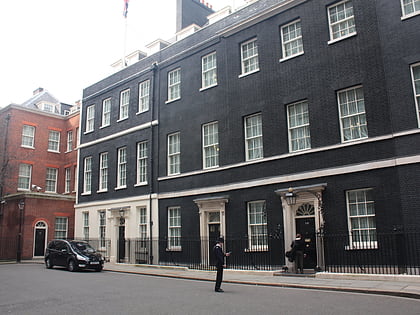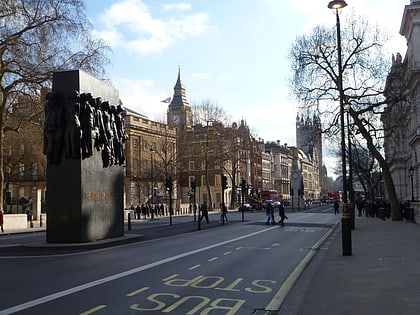The Cenotaph, London

Facts and practical information
The Cenotaph is a First World War memorial on Whitehall in London, England. Designed by Sir Edwin Lutyens, it serves as the United Kingdom's national memorial to the British and Commonwealth dead of the two world wars, and British casualties in later conflicts. The original Cenotaph, intended as a temporary structure for a parade celebrating the end of the First World War, was erected in 1919. During the parade, over 15,000 servicemen, including representatives from France and the United States, saluted the structure as they marched past it. The word "cenotaph" is derived from Greek, meaning "empty tomb", and the temporary structure came to symbolise the absent dead and provide a focal point for the public's mourning, repatriation of bodies having been disallowed from an early stage in the war. A week after the parade, over a million people visited the Cenotaph, including some who made pilgrimages from distant parts of the country, and it was surrounded by floral tributes. ()
The Cenotaph – popular in the area (distance from the attraction)
Nearby attractions include: Big Ben, Churchill War Rooms, Parliament Square, Banqueting House.
Frequently Asked Questions (FAQ)
Which popular attractions are close to The Cenotaph?
How to get to The Cenotaph by public transport?
Metro
- Westminster • Lines: Circle, District, Jubilee (4 min walk)
- Embankment • Lines: Bakerloo, Circle, District, Northern (9 min walk)
Ferry
- Westminster Pier • Lines: Blue Tour, Green Tour, Rb1, Rb1X, Rb2, Red Tour (4 min walk)
- London Eye - Waterloo Pier • Lines: Rb1, Rb1X, Rb2, Red Tour (7 min walk)
Train
- Charing Cross (9 min walk)
- London Waterloo (15 min walk)
Bus
- Trafalgar Square / Charing Cross Station • Lines: N26 (10 min walk)
- Charing Cross Station • Lines: N26 (11 min walk)








 Tube
Tube









